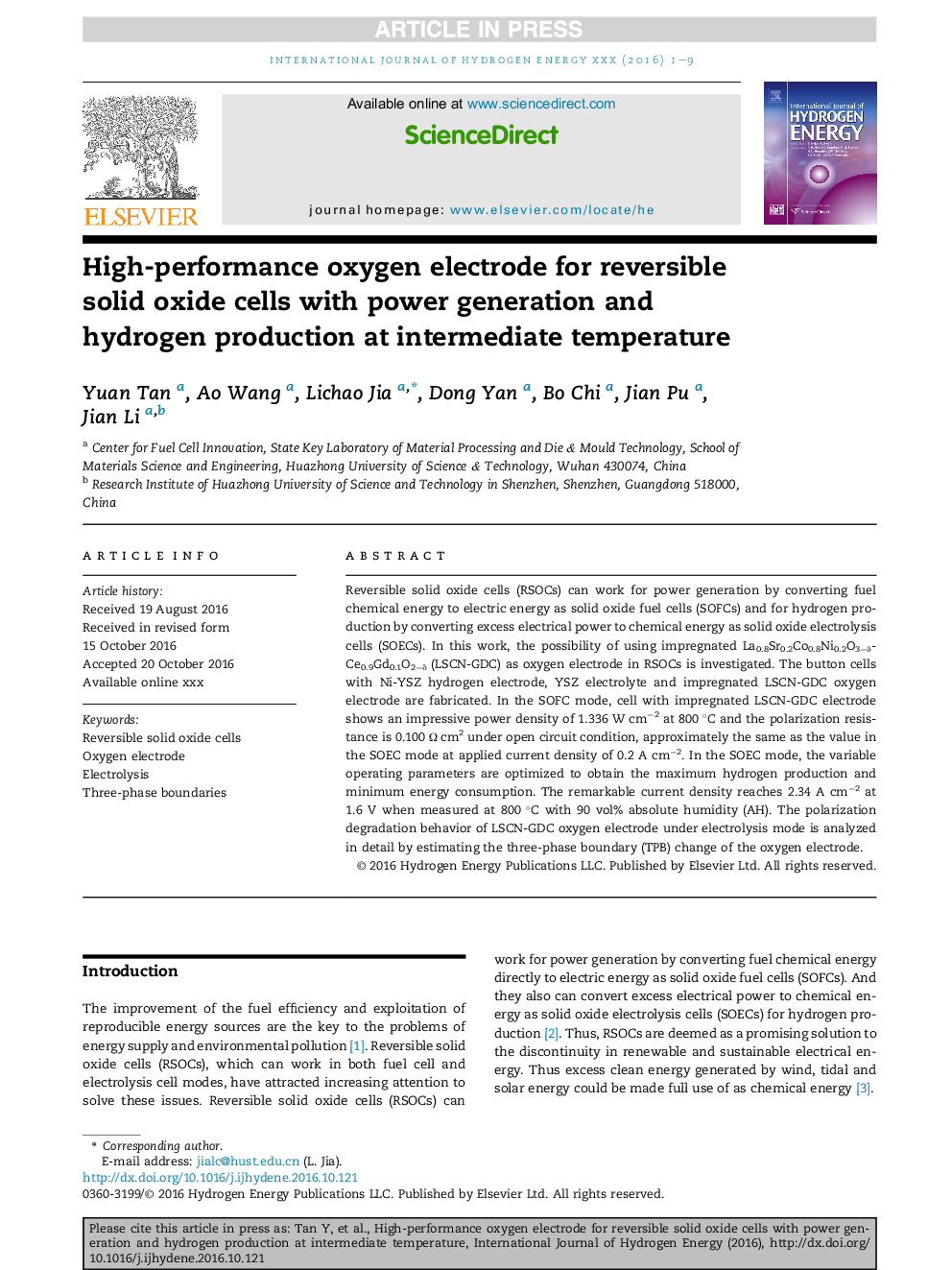| Article ID | Journal | Published Year | Pages | File Type |
|---|---|---|---|---|
| 5146361 | International Journal of Hydrogen Energy | 2017 | 9 Pages |
Abstract
Reversible solid oxide cells (RSOCs) can work for power generation by converting fuel chemical energy to electric energy as solid oxide fuel cells (SOFCs) and for hydrogen production by converting excess electrical power to chemical energy as solid oxide electrolysis cells (SOECs). In this work, the possibility of using impregnated La0.8Sr0.2Co0.8Ni0.2O3âδ-Ce0.9Gd0.1O2âδ (LSCN-GDC) as oxygen electrode in RSOCs is investigated. The button cells with Ni-YSZ hydrogen electrode, YSZ electrolyte and impregnated LSCN-GDC oxygen electrode are fabricated. In the SOFC mode, cell with impregnated LSCN-GDC electrode shows an impressive power density of 1.336 W cmâ2 at 800 °C and the polarization resistance is 0.100 Ω cm2 under open circuit condition, approximately the same as the value in the SOEC mode at applied current density of 0.2 A cmâ2. In the SOEC mode, the variable operating parameters are optimized to obtain the maximum hydrogen production and minimum energy consumption. The remarkable current density reaches 2.34 A cmâ2 at 1.6 V when measured at 800 °C with 90 vol% absolute humidity (AH). The polarization degradation behavior of LSCN-GDC oxygen electrode under electrolysis mode is analyzed in detail by estimating the three-phase boundary (TPB) change of the oxygen electrode.
Related Topics
Physical Sciences and Engineering
Chemistry
Electrochemistry
Authors
Yuan Tan, Ao Wang, Lichao Jia, Dong Yan, Bo Chi, Jian Pu, Jian Li,
